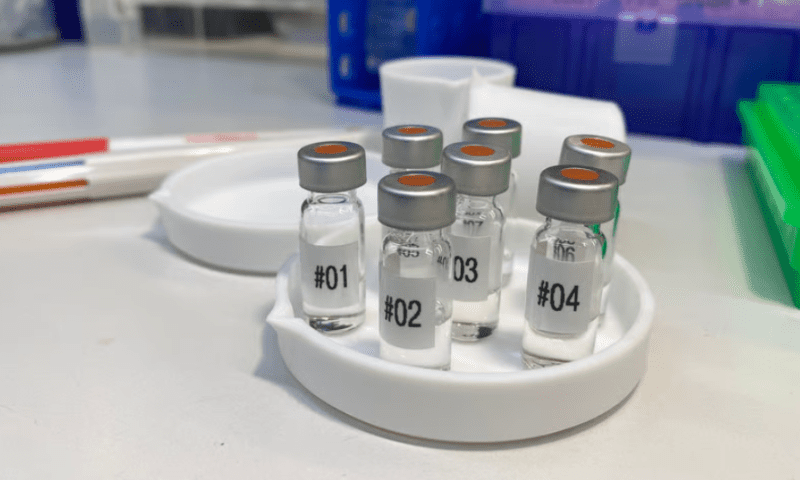In the wise words of comedian Sarah Silverman, “Death creeps in through the gums.” While it may not be quite that clear-cut, the complications of periodontal disease—better known as gum disease—are far from pleasant.
The condition starts with inflamed gums, which gradually progresses to tooth decay and if left untreated, eventually to jawbone loss. Treatments are invasive and painful; they also involve the use of antibiotics, which kill off both helpful and pathological bacteria in the mouth.
But for the 20 to 50% of people worldwide who live with some degree of gum disease, there’s a bit of good news. A research team from New York University has developed an oral gel containing a small compound that inhibits a key driver of the condition, with promising results in mice. They described their work in a paper published Sept. 20 in Cell Reports.
The compound in the gel is an antagonist of succinate, a byproduct of human and bacterial cell metabolism that the NYU team and others had previously linked to gum disease and bone loss. In their latest study, the NYU scientists sought to back up those earlier findings by first assessing levels of succinate in dental plaque from humans and plasma samples from mice. The results showed higher succinate levels in diseased samples than in those from subjects with healthy gums.
To confirm that it was indeed succinate driving gum disease, the researchers then induced gum infections in two groups of mice: one in which the gene for the succinate receptor was knocked out and a normal control group. Upon testing, they found that the control group had more inflammation in the bloodstream and in the gum tissue, as well as larger, more diverse groups of bacteria in their mouths. Giving extra succinate to both groups of mice furthered the discrepancy. The gum disease worsened in the control mice, while the group without the succinate receptor gene had less inflammation and bone loss.
“Mice without active succinate receptors were more resilient to disease,” Fangxi Xu, first co-author, said in a press release. “We now have stronger evidence that elevated succinate and the succinate receptor are major drivers of the disease.”
With succinate confirmed as their target, the team set out to see if they could come up with a therapy against it. They developed a compound, dubbed 7a, that blocks the succinate receptor in host cells, preventing it from being activated. Upon testing it in human gum cells, they found that it reduced inflammatory markers and inhibited the formation of osteoclasts, a type of cell that breaks down bone tissue.
The researchers then formulated 7a into a gel, which they applied every other day for 28 days to the gums of mice with gum disease. By the end of the study period, they had half as much bone loss as untreated mice.
There was also a surprise. Even though the compound was designed to target the succinate receptor in host cells, the makeup of the mice’s oral microbiomes changed too. The gel had depleted families of gum disease-associated bacteria while leaving other strains intact. Further experiments showed that 7a wasn’t actually affecting the growth of the bacteria but rather was changing them by modulating inflammation.
“This result in fact supports that the bacterial community can be regulated through inflammation,” Xin Li, Ph.D., lead author and NYU College of Dentistry professor, told Fierce in an email. “This is strong evidence of the connection between host response and microbe.”
The researchers are now working to optimize the dose and application timing of the gel in animal models, as well as looking for toxicity. They hope to eventually develop gels or oral strips for use in patients who have or are at risk for gum disease, along with a stronger formulation that would be applied by dentists.

